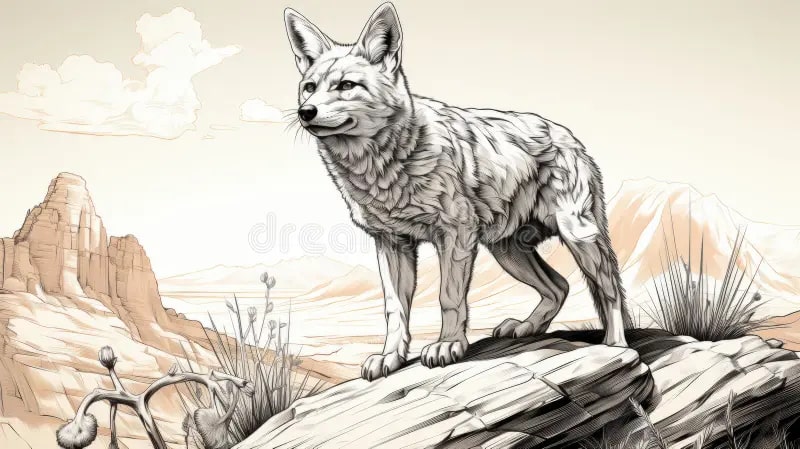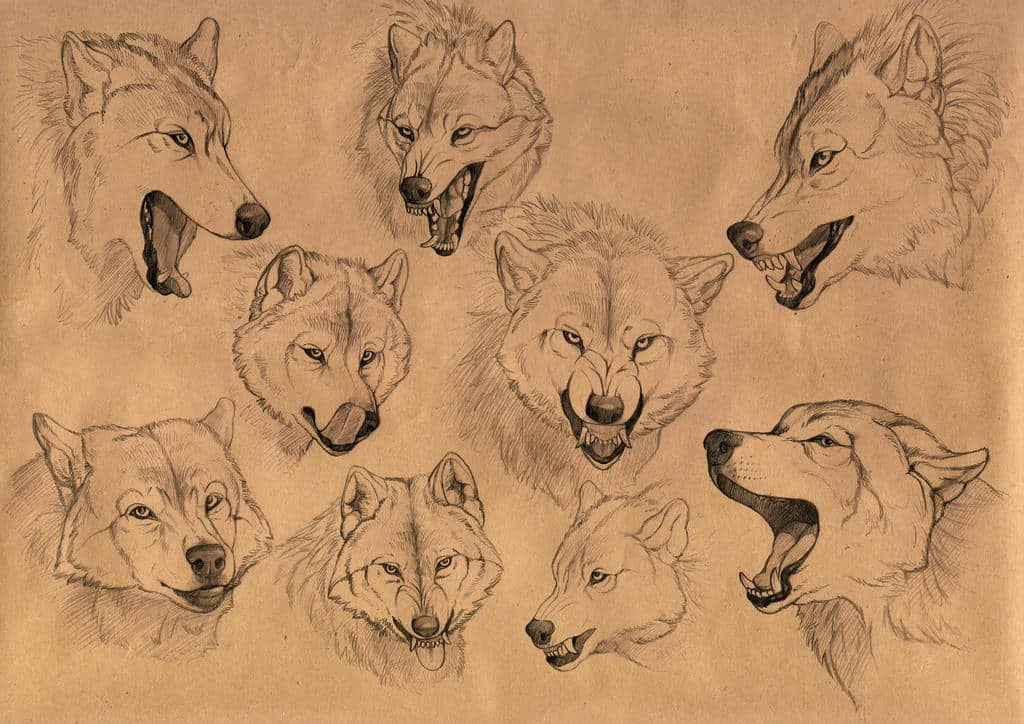Drawing a wolf can be a special experience that lets artists express their feelings and connect with nature. Many people find that when they draw a wolf, it helps them improve their art skills and tell a story about strength and freedom. Join in the fun of turning a blank page into a beautiful picture of this amazing animal!
drawing:el5lvtvvu6c= wolf is fun and can be easy if you break it down into simple steps. Start by learning about its body shape and special features like its long snout and pointy ears. Use basic shapes to sketch the outline, and then add details like fur texture and expressions to make it look real.
We’ll explore techniques, tips, and everything you need to bring these majestic creatures to life on paper. Whether you’re a beginner or looking to refine your skills, there’s something for everyone in our upcoming discussions on drawing= wolf.
Essential Drawing Materials – The Tools You Can’t Draw Without!
- Pencils:Different Grades: Use pencils with different hardness, like HB for general use and softer ones (2B, 4B, 6B) for shading.Suggestion: A set that includes HB, 2B, 4B, and 6B is great for beginners.
- Paper:Choose thick drawing paper with some texture. This helps hold the pencil marks well.
- Erasers:Get a regular rubber eraser for mistakes and a kneaded eraser for lifting graphite gently.Kneaded erasers can be shaped to fit small areas, making them handy for details.
- Blending Tools:Blending Stumps or Tortillons are help smooth out your pencil strokes and make the fur look soft.
- Other Useful Tools:Ruler: Good for drawing straight lines and keeping proportions correct.Sharpener: A quality sharpener helps keep your pencils sharp for detailed work.
Unlock the Secrets of Wolf Anatomy for Realistic Wildlife Art:
Understanding drawing:el5lvtvvu6c= wolf anatomy is important for anyone who wants to draw these amazing animals accurately. Wolves have a strong body structure with muscular legs, a deep chest, and a broad head. This design helps them run fast and be agile in different environments. Their unique features, like sharp jaws and big paws, are essential for capturing their true essence in art.

When you learn about wolf anatomy, you can draw their movements and expressions better. Knowing how their body parts work together allows you to create drawings that look lifelike and dynamic. It also helps you show details like the texture of their fur and how their muscles look, making your artwork more realistic.
Read More: Will Theron Roth – The Untold Story!
How Do You Break Down Wolf Anatomy for Stunning,Accurate Sketches?
To draw wolves, you can start with some simple steps. First, use basic shapes to create an outline. For example, draw a circle for the head, an oval for the body, and rectangles for the legs. This will help you build a strong base for your drawing.
Next, pay attention to proportions and angles. Make sure the head and body are the right size compared to each other. The legs should also look natural and fit well with the body. You can improve your drawing by comparing different parts and adjusting them to make everything look balanced and realistic.
What Are the Most Fascinating Detailed Features of Wolves in the Wild?
When you drawing:el5lvtvvu6c= wolf, it’s important to focus on their key features to make your drawing look realistic and interesting.
- Head Structure: The wolf’s head has a unique shape. The snout is long and pointed, giving it a fierce look. The ears are tall and sharp, sitting at the top of the head, which helps the wolf hear well. The eyes are usually almond-shaped and can show emotions like intelligence and alertness.
- Body Shape and Limb Positioning: Wolves have strong, muscular bodies that are usually long and deep in the chest. When you draw, notice how the legs are long and powerful, which helps them move quickly and gracefully. The tail is bushy and often held high, adding to their balance.
What Are the Key Tips for Mastering Shading and Texture in Art?
- Making Fur Look Real: Use small, overlapping lines to create the look of fur. This technique helps show that the fur is soft and has volume. Remember to change the length of your lines based on where you’re drawing. For example, the fur around the neck is usually longer and fluffier, while the fur on the legs is shorter and smoother. You can also use a tool called a blending stump to mix colors and make the fur look more natural.
- Understanding Light: It’s important to know where your light is coming from. This helps you decide where to shade. Parts of the wolf that get more light should be lighter, and the parts in shadow should be darker. This difference in light and dark makes your drawing look three-dimensional and more lifelike.
What Are the Best Tips for Capturing Emotion and Expression in Art?
To bring your drawing:el5lvtvvu6c= wolf to life, it’s important to show emotions through their eyes and mouth, as well as their posture and movement. The wolf’s eyes are crucial for expressing feelings. For instance, wide eyes can indicate fear or excitement, while squinting can suggest aggression or focus. The mouth shape also plays a role; an open mouth can show curiosity, while a closed mouth might represent calmness or tension.

A crouched wolf may appear cautious, while one that stands tall looks confident. The position of the limbs is important, too; stretched limbs can show action or alertness, while relaxed limbs suggest calmness. By focusing on these elements, you can create drawings that not only look realistic but also tell a story and convey emotions, making your artwork more engaging.
Read More: Pomni – The Amazing Digital Circus!
What Are the Top Advanced Techniques for Taking Your Art to the Next Level?
When you want to take your wolf drawings to the next level, advanced techniques are key. One fun way to improve your art is by drawing wolves in dynamic poses like howling or running. To do this well, watch videos or look at pictures of real wolves to see how their bodies move. For example, when a wolf howls, it lifts its head and opens its mouth, creating a beautiful shape. A running wolf stretches its legs and body to show how fast it can go.
You can also make your drawings more interesting by putting wolves in different settings. For a wolf in the snow, use soft shades to show the cold and brightness of the snow. If you’re drawing a wolf in a forest, add darker shadows and green details to create depth. This way, you not only show the wolf but also where it lives, making your artwork come alive.
FAQs:
1. Can I use colored pencils or markers to draw wolves?
Yes, you can use colored pencils or markers to add vibrancy to your wolf drawings. They can help enhance the fur color and the overall atmosphere of your artwork, making it more visually striking.
2. How do I know if my proportions are correct when drawing a wolf?
To check your proportions, frequently compare the sizes of different body parts as you draw. Use reference images to guide you, ensuring that the head, body, and limbs are in harmony and proportionate.
3. What type of paper is best for drawing wolves?
A textured drawing paper is ideal because it holds graphite well, allowing for smooth shading and detailing. Choose a heavier weight paper to prevent smudging and tearing during the drawing process.
4. Are there specific online resources for learning to draw wolves?
Yes, many online platforms, like YouTube and art tutorial websites, offer step-by-step guides and video lessons specifically for drawing wolves. These can provide valuable insights and techniques.
5. How can I improve my drawing skills over time?
To improve your drawing skills, practice regularly, seek feedback from peers, and experiment with new techniques. Keeping a sketchbook to track your progress can also motivate you to keep improving.
6. How do I choose the right reference images for drawing wolves?
Choose reference images that show wolves in various poses and lighting conditions. Look for clear, high-quality photos that highlight the wolf’s anatomy and fur texture for the best results.
7. What are the best techniques for drawing a wolf’s eyes?
To draw a wolf’s eyes, focus on their shape and expressiveness. Start with an almond shape, add details like the pupil and iris, and use highlights to make them look lively and realistic.
Conclusion:
In conclusion, drawing wolves is a fun way to improve your art skills and connect with nature. By breaking down their shapes and using techniques like shading and texture, you can create realistic pictures of these amazing animals. Showing their emotions through their eyes and body positions makes your drawings more interesting.
As you get better, try advanced techniques, like placing wolves in different backgrounds and using good materials. Always pick the right reference images and pay attention to light and shadows for extra depth.
Read More:





